-
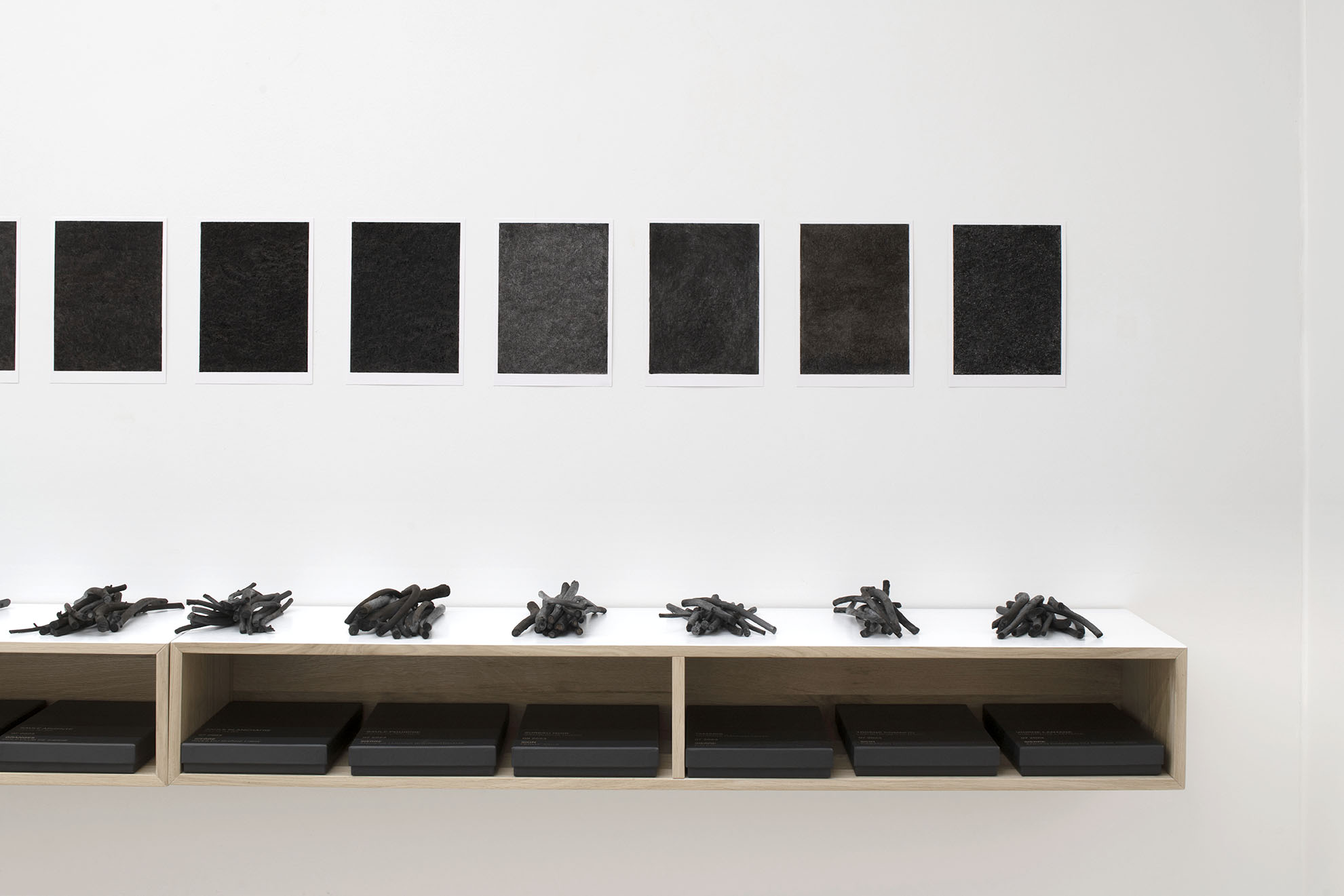 Exhibition view
Exhibition view -
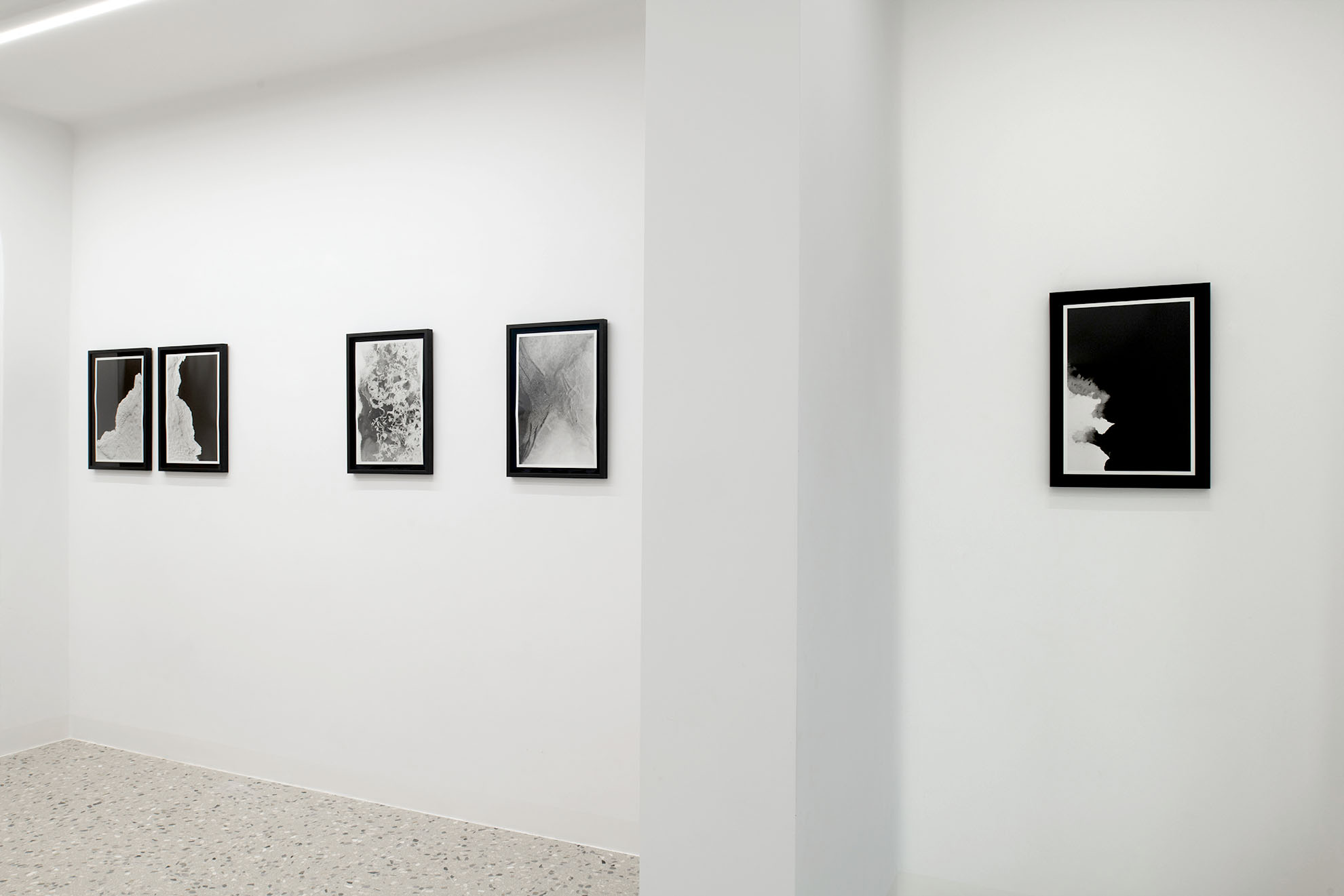 Exhibition view
Exhibition view -
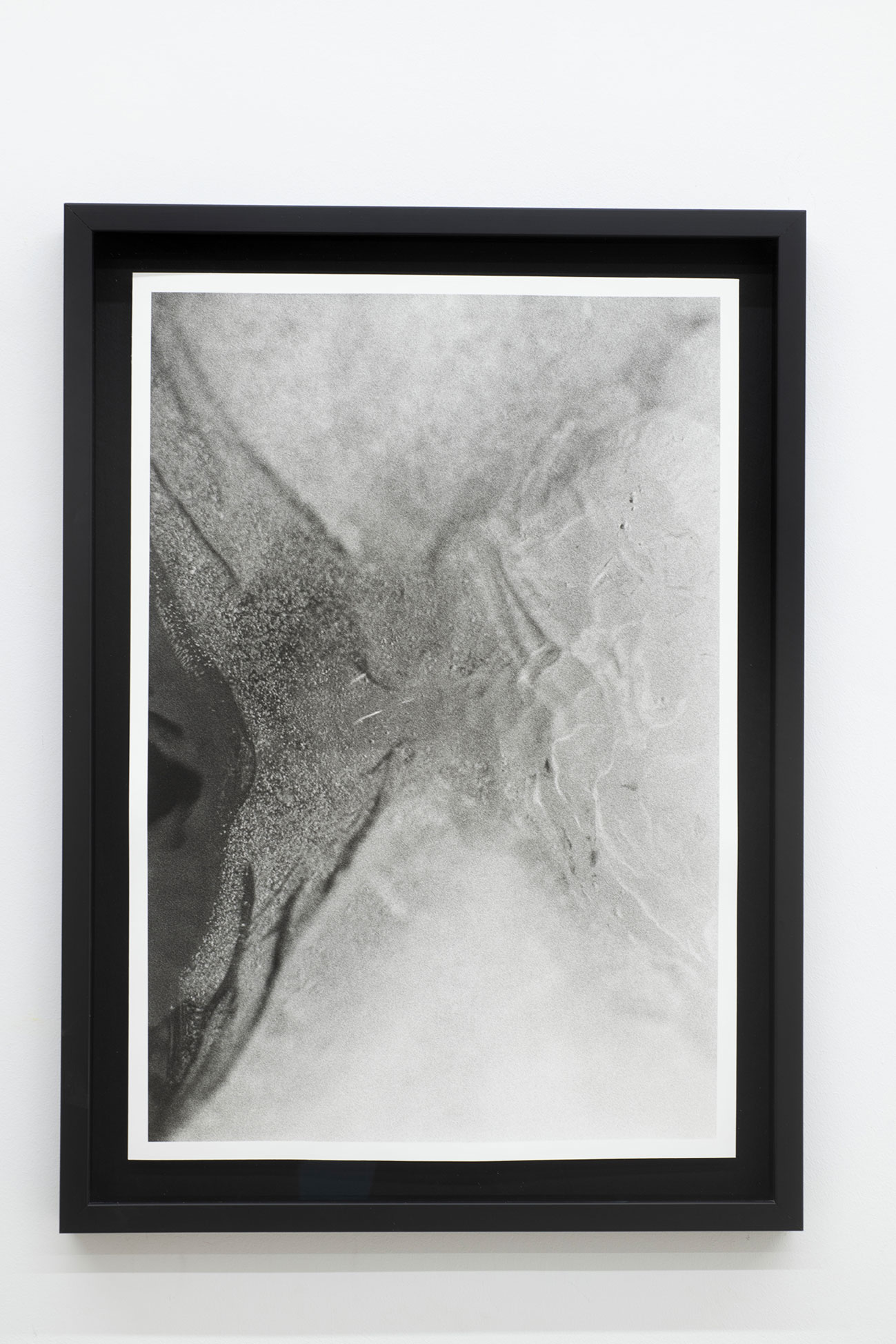 Elise Guillaume78°55,8'N 12°18,4'E, 2023
Elise Guillaume78°55,8'N 12°18,4'E, 2023
Bodies of Water
Gelatin-silver print, made with an Arctic seaweed-based developer
Paper: 46,5 x 31 cm
Frame: 52,2 x 40,2 cm -
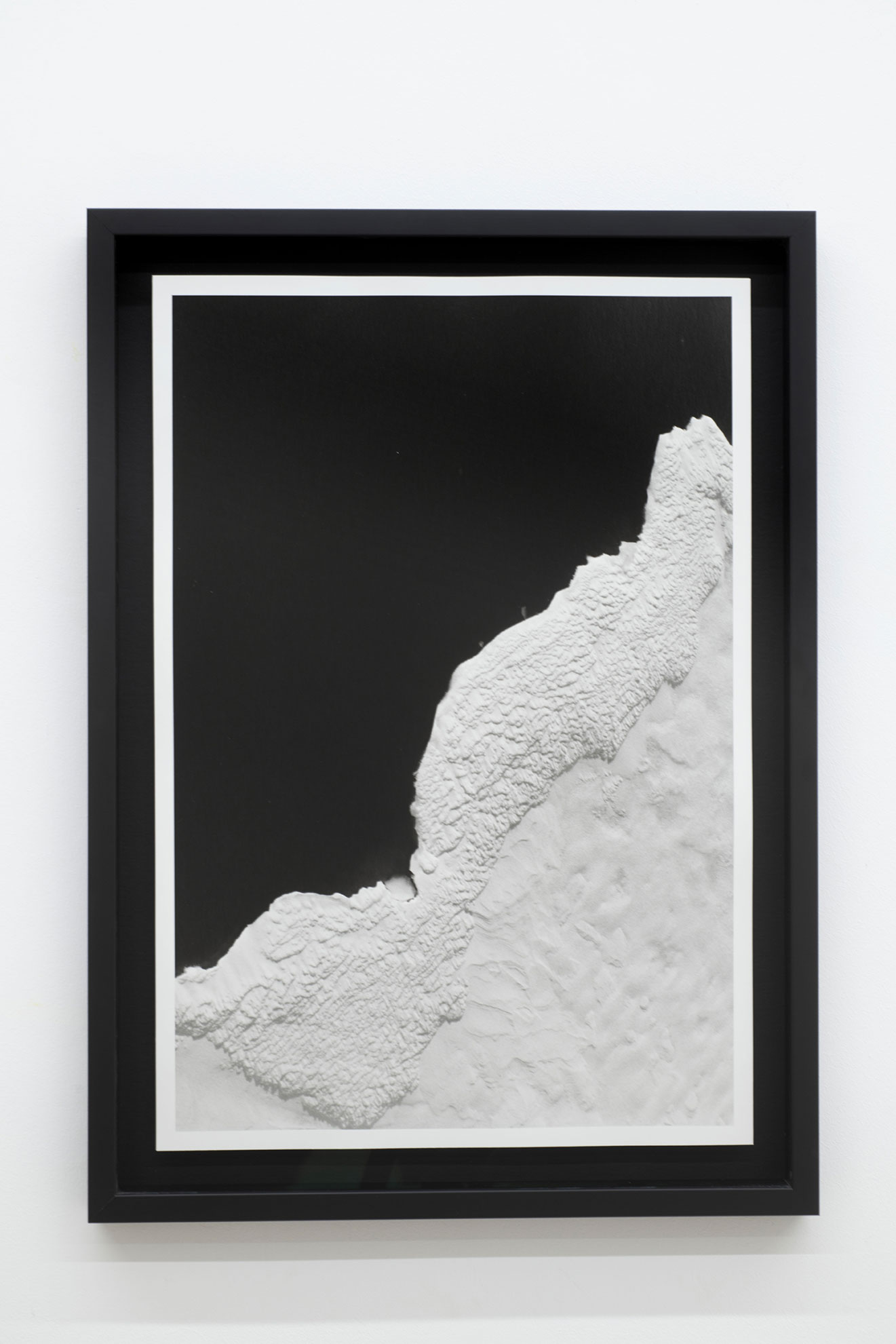 Elise Guillaume79°33,7'N 10°54,4'E (II), 2023
Elise Guillaume79°33,7'N 10°54,4'E (II), 2023
Bodies of Water
Gelatin-silver print, made with an Arctic seaweed-based developer
Paper: 46,5 x 31 cm
Frame: 52,2 x 40,2 cm -
 François GénotFusain d'Europe, 2023
François GénotFusain d'Europe, 2023
European spindle-tree hand-crafted charcoal on paper
Frame: 56 x 41 cm -
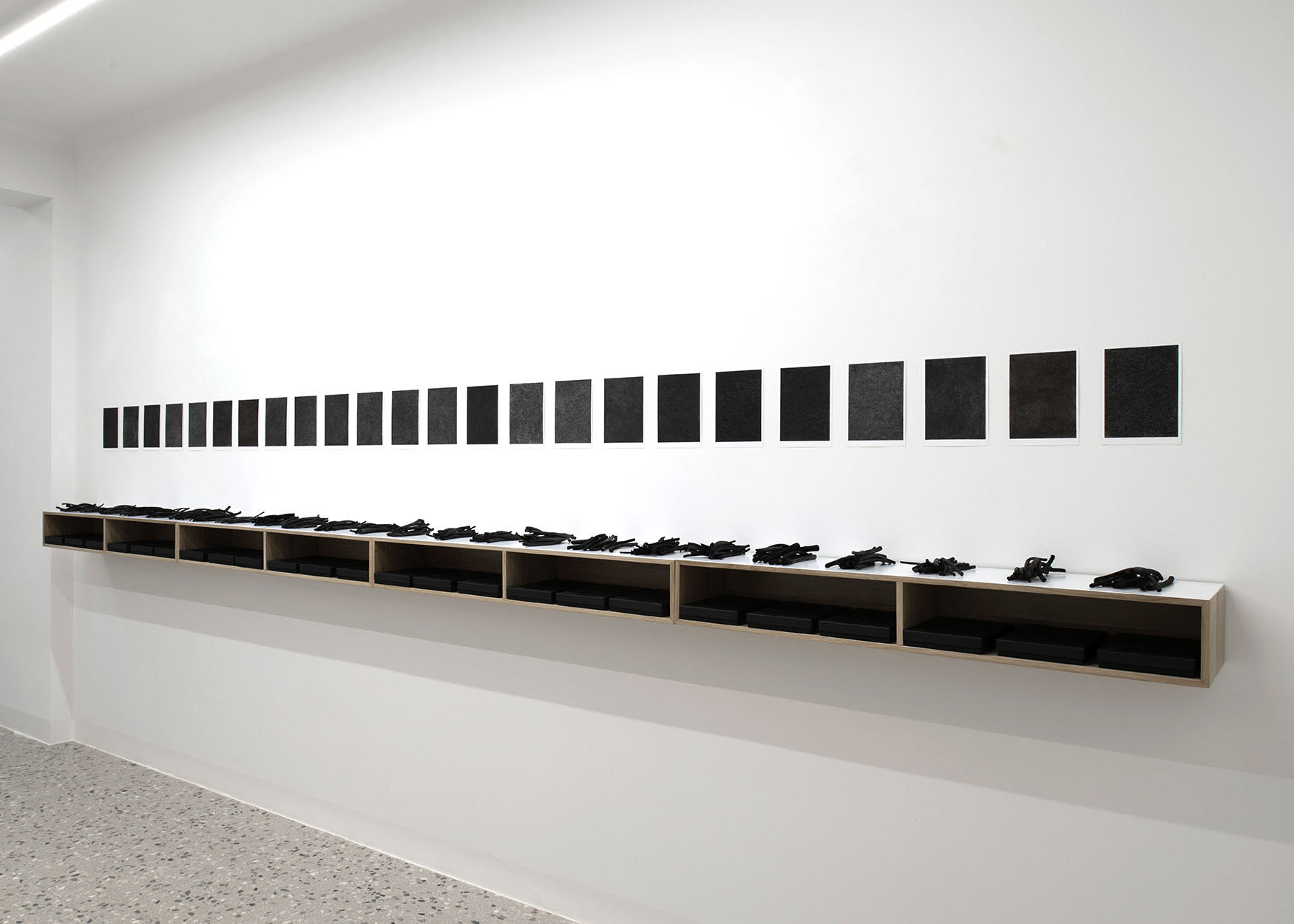 François GénotRhône Carbone, 2023
François GénotRhône Carbone, 2023
Mémoire Carbone
Set of 24 charcoals and 24 corresponding monochrome drawings -
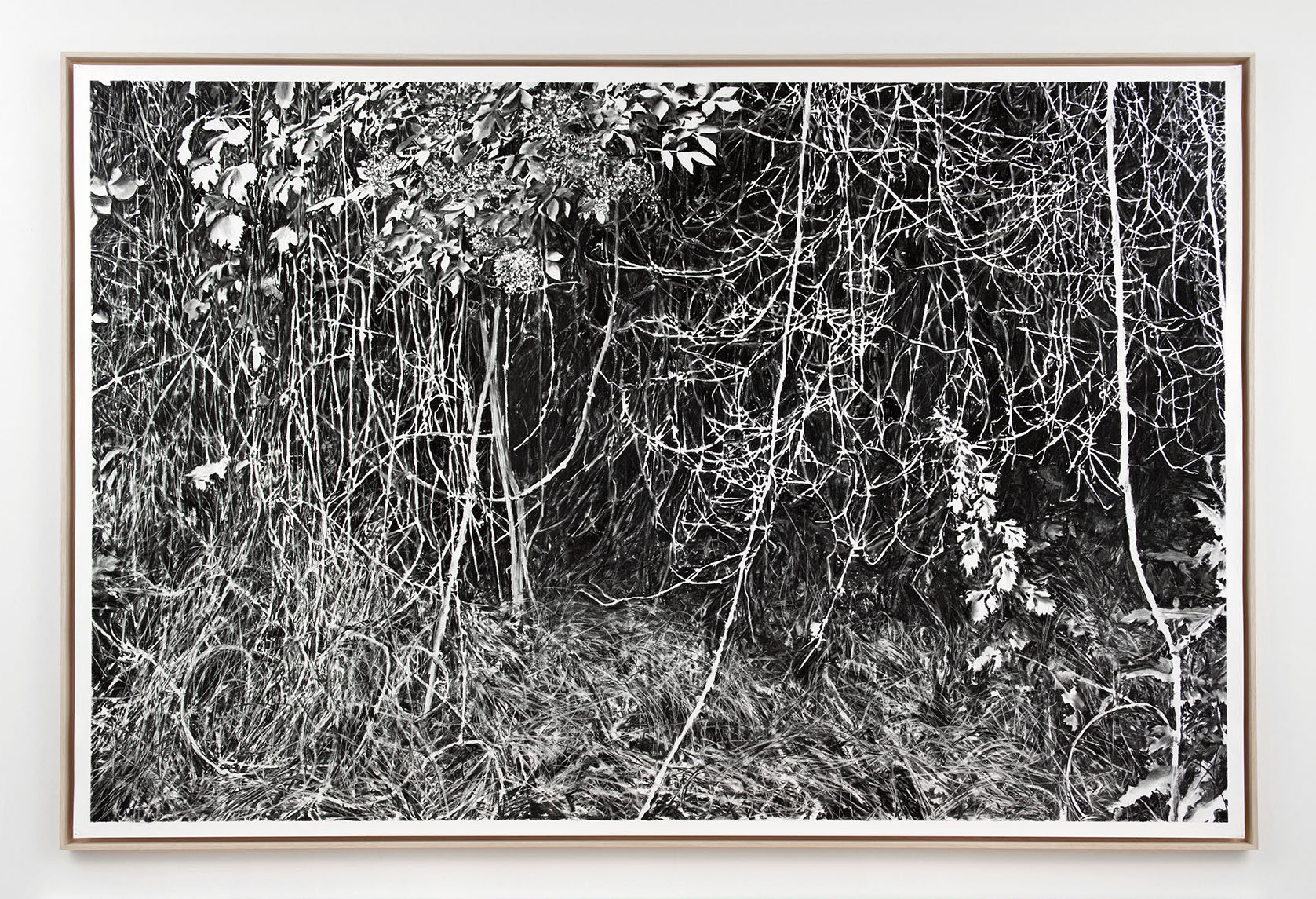 François GénotLa bourgeoisie ou le cri du grand corbeau (Sierre), 2023
François GénotLa bourgeoisie ou le cri du grand corbeau (Sierre), 2023
Charcoal drawing of elder, clematis and acacia on paper
Frame: 157 x 229,5 cm -
 Elise GuillaumeEventual Horizon, 2023
Elise GuillaumeEventual Horizon, 2023
4k video, stereo and 5.1 sound, Pro Res 422
Our next exhibition, ‘Borrowed Places’, opens a dialogue between the practices of François Génot (1981, Fr) and Elise Guillaume (1996, Be). The artists are linked by an experimental, site-specific approach, in which the living is all at once subject, co-author and material of the creation. In their immediate experience of the environments which they study, Elise Guillaume and François Génot have been developing a challenging and coherent art, consistent with the preoccupations which they share. At a time when our perception of nature, as an external and exploitable entity, has increasingly extinguished our sensitivity to the subtleties of the living, the two artists are working towards restoring our attention by granting to marginal, ill-treated, ignored spaces the place they deserve.
On one of the two main walls of the space are deployed a set of 24 bundles of charcoal made out of the essences of indigenous and spontaneous shrubby plants from the valley of the Rhone, and their associated monochromes. This project, Rhône Carbone, deriving from a residency at the Ferme-Asile in Sion, in the Swiss canton of Valais, translates into a novel form a process that has already been in course for several years in the work of François Génot. By making charcoal out of the plants he wants to represent, the artist maintains an active collaboration with the environments with which he experiments. ‘These are often pieces of fallow land, hedges, “third landscapes”, intermediary zones which carry the brunt of our anthropic developments. By transforming those fragments of landscapes doomed to disappear into an artistic tool, I load the drawings with the carbon memory of those locations.’ The choice of species collected in the valley is not haphazard. Much to the contrary, each species unveils a specific territorial issue concerning our relationship with the living and with environments. Establishing a ‘carbon library’ as an archive of charcoal and of its dual value as tool and as witness, offers a novel way of contemplating monochrome drawing. The pure carbon surface, vibrating according to the asperities of the paper, translates in a concrete manner the singularity, the presence of species in each and every tool.
Facing it, Elise Guillaume’s series of silver photographs Bodies of Water comes out of a residency in the Arctic this year. Here too the tool is an experimental one, and it integrates the living within the traditional medium of photography. The development of the prints was done with algae gathered locally. These works, which are figurative and precisely situated, nevertheless establish a play of scale between the apparent calm and immensity of the arctic territory and the moving, living and sensitive body. Not far away, the video work Eventual Horizon affirms those issues. With a symbiotic aim, physical transformations are intermingled with psychic states, amongst wide expanses of ice, turbulent streams, and mourning as a constitutive element of hope. By reserving a high, and equal, attention to the treatment of image and of sound, the latter created on the basis of a series of recordings in the field using hydrophone and geophone, Eventual Horizon resonates viscerally in the spectator, who is then prompted to face those sometimes contradictory currents of emotion and of energy. Between potency and fragility, resilience and exhaustion, the climate stakes move into the realm of the intimate.
Living and working in the Greater East of France, François Génot has been active on the international scene since 2005. He has collaborated with renowned institutions such as the Wattwiller François Schneider Foundation, the CIAP – Île de Vassivière, or the Laboratories of Aubervilliers. Over the last few years his work has entered the collection of the Strasbourg Museum of Modern and Contemporary Art, and the Alsace FRAC. In 2023 François Génot has collaborated with the Konschthal Esch in Luxemburg and has taken part in the International Residency at the Sion Ferme-Asile, and in the Engramme residency in Quebec, and he has participated in various personal and collective exhibitions, among them at Engramme in Quebec, at Fertile association in Paris, at Galerie LMNO in Brussels, and at the FRAC Alsace in Sélestat, where he co-curates the exhibition Sur les bords du monde — férales, fières et farouches [On the Edges of the World — Feral, Proud and Fierce].
The work of Elise Guillaume, based in Brussels, is currently shown in the solo exhibition Émotions Terranaissantes in Roubaix’s Espace Croisé (until December). She has regularly exhibited in Belgium and abroad in places or structures such as Gasworks (2003, UK), KIKK Festival (2021, BE), CICA Museum (2021, KR), Ars Electronica (2021, AT), Instants Vidéo Numériques et Poétiques (2002, FR), Imagine Science Film Festival (2022, USA), or the Wallonia Brussels Centre / Paris (2022-23, FR). Short-listed for numerous prizes such as the Aesthetica Art Prize (2022, finalist) or the Arte Laguna Art Prize (2022, finalist, and awarded the Art Nova prize), the artist, who graduated from the Royal College of Art (MA Contemporary Art Practice) in London, was awarded a research and development grant by the Arts Council England in 2022.